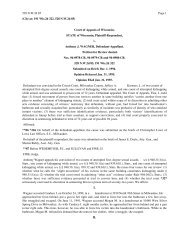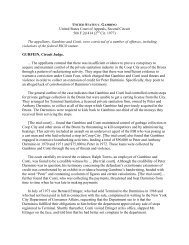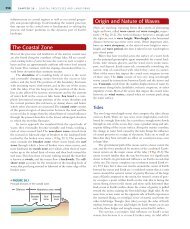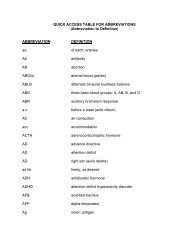Simulink Tutorial on Digital Modulation Methods - Cengage Learning
Simulink Tutorial on Digital Modulation Methods - Cengage Learning
Simulink Tutorial on Digital Modulation Methods - Cengage Learning
Create successful ePaper yourself
Turn your PDF publications into a flip-book with our unique Google optimized e-Paper software.
13.5. BINARY PHASE-SHIFT KEYING (BPSK) 599<br />
3. t/T = 0, 1, 2,...<br />
4. Because of additive noise.<br />
We now c<strong>on</strong>sider noiseless transmissi<strong>on</strong>. To change the variance of the AWGN,<br />
double-click <strong>on</strong> the blue box Noise variance in the <str<strong>on</strong>g>Simulink</str<strong>on</strong>g> model. A scrollbar is<br />
displayed where you can adapt the noise to the smallest possible value (zero is not<br />
possible since singularities would result). Restart the simulati<strong>on</strong> from the pulldown<br />
menu:<br />
TUTORIAL PROBLEM<br />
Simulati<strong>on</strong> > Stop<br />
Simulati<strong>on</strong> > Start<br />
Problem 13.10 [Noiseless BPSK Transmissi<strong>on</strong> with NRZ Rectangular Pulses and<br />
Matched Filter]<br />
1. How do the transmitted signal u(t) and the received signal r(t) differ now?<br />
2. Which modificati<strong>on</strong>s do you observe in the eye patterns and scatter plots?<br />
SOLUTION<br />
1. u(t) and r(t) are now identical.<br />
2. No modificati<strong>on</strong>s at the transmitter plots. Since no noise is present at the receiver,<br />
the eye opening is maximum and sampling of the trajectory yields the BPSK<br />
signal c<strong>on</strong>stellati<strong>on</strong> points. (Slight inaccuracy is due to the integrati<strong>on</strong>.)<br />
Go back to the main menu and choose a Butterworth lowpass as a receive filter<br />
instead of the matched filter:<br />
BPSK > NRZ Rectangular > Butterworth<br />
Compare the source signal a(t) and the sink signal v(t). To do so, place the source<br />
signal window directly above the sink signal window.<br />
TUTORIAL PROBLEM<br />
Problem 13.11 [BPSK with NRZ Rectangular Pulses and Butterworth Receive<br />
Filter]<br />
1. Explain the delay between a(t) and v(t).<br />
2. Do you observe detecti<strong>on</strong> errors?<br />
3. Repeat Problems 13.9 and 13.10 for the Butterworth receive filter.<br />
© 2013 <strong>Cengage</strong> <strong>Learning</strong>. All Rights Reserved. May not be scanned, copied or duplicated, or posted to a publicly accessible website, in whole or in part.

















